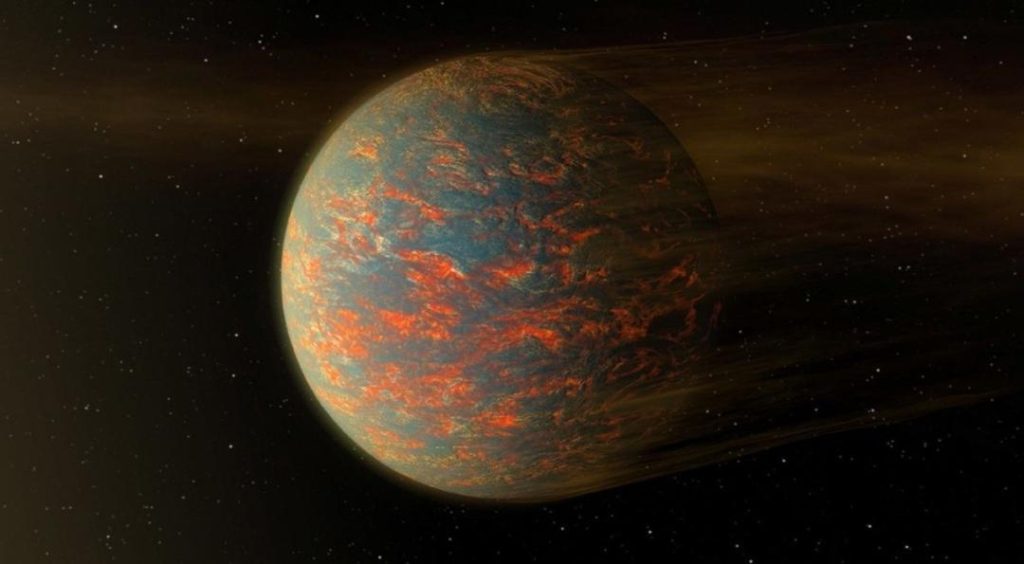
Newly-Discovered Super-Earth Heats Up & Freezes Every 300 Days
In a fascinating discovery, scientists have found a new exoplanet that defies the conventional understanding of planetary climates. The newly-discovered “super-Earth” is orbiting a Sun-like star 20 light-years from Earth, and its unique orbit causes it to experience extreme heat for part of the year and freezing temperatures for the rest. This extraordinary phenomenon occurs every 300 days, making it a truly remarkable celestial body.
The super-Earth, which is classified as a planet bigger than Earth but lighter than Neptune and Uranus, has been designated as K2-141b. Its eccentric orbit, which is shaped like an oval, takes it extremely close to its star during the first part of its year, resulting in scorching temperatures. As it moves farther away from the star, the planet is plunged into a deep freeze, making it a truly inhospitable environment.
This extraordinary discovery was made possible through the Kepler space telescope, which has been instrumental in detecting thousands of exoplanets in recent years. The Kepler mission has been focused on identifying planets that orbit within the habitable zones of their stars, where temperatures are suitable for liquid water to exist. However, K2-141b’s unique orbit takes it far beyond the habitable zone, making it a fascinating anomaly in the search for life beyond Earth.
The extreme climate fluctuations on K2-141b are likely due to its highly eccentric orbit, which takes it from as close as 0.02 astronomical units (AU) to as far as 0.13 AU from its star. One AU is the average distance between the Earth and the Sun, so K2-141b’s proximity to its star during the first part of its year is equivalent to Earth being just 2% of its current distance from the Sun. This would result in temperatures reaching as high as 2,000 degrees Fahrenheit (1,093 degrees Celsius), making it one of the hottest places in the known universe.
In contrast, when K2-141b moves farther away from its star, it experiences a drastic temperature drop, with temperatures plummeting to as low as -400 degrees Fahrenheit (-240 degrees Celsius). This extreme cold would make it difficult for any liquid water to exist on the planet’s surface, making it even more challenging for life to emerge.
The discovery of K2-141b is significant not only because of its extreme climate fluctuations but also because it challenges our understanding of planetary formation and evolution. The planet’s unique orbit is likely the result of gravitational interactions with other planets in its system, which could provide valuable insights into the dynamics of planetary systems.
The search for life beyond Earth is an ongoing endeavor, and the discovery of K2-141b serves as a reminder that the universe is full of surprises. While the planet’s extreme climate makes it unlikely to support life, it could provide valuable insights into the formation and evolution of planetary systems.
In conclusion, the newly-discovered super-Earth K2-141b is a fascinating example of the diversity and complexity of planetary systems in the universe. Its extreme climate fluctuations, which occur every 300 days, make it a truly unique celestial body that continues to challenge our understanding of planetary formation and evolution.
Source:
Note: The news source is https://science.nasa.gov/universe/exoplanets/discovery-alert-super-earth-swings-from-super-heated-to-super-chill/






